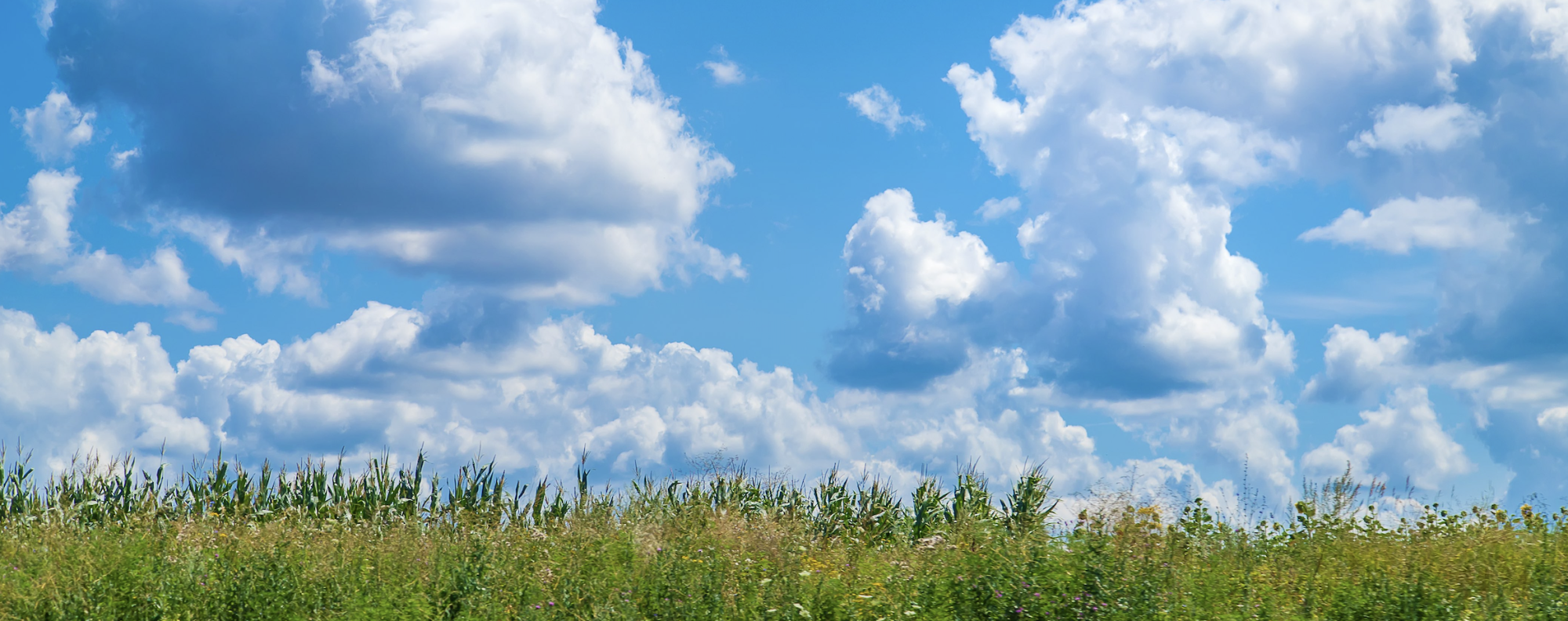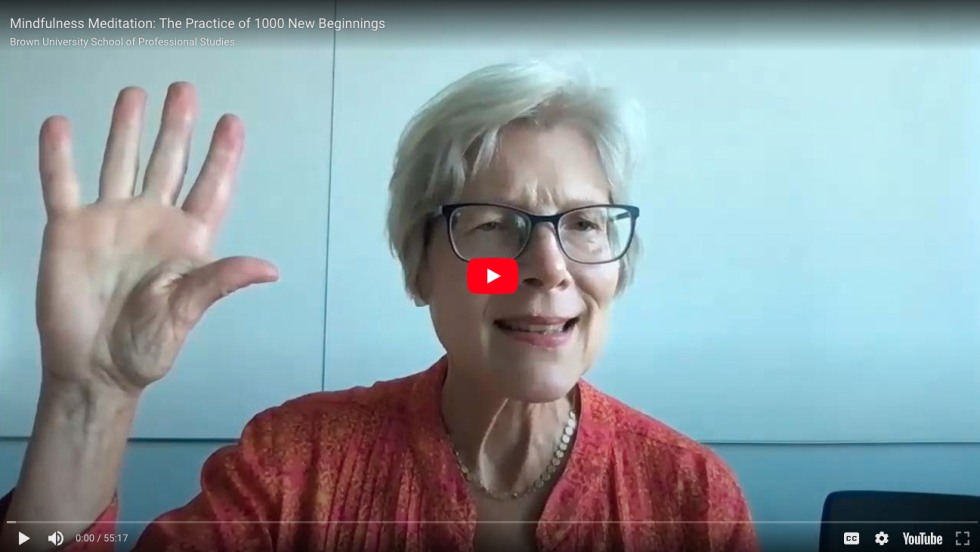
The practice of a thousand beginnings
Anyone who’s applied any amount of effort towards having and maintaining a meditation practice inevitably comes up against challenges in finding and making time for it. Senior Mindfulness Instructor, Lynn Koerbel reflects on two areas to support our practice: The fuel and the friction.
It’s September — the start of the school year, a time of beginnings and fresh intentions — even for those of us who are far removed from being in school or having children in school.
Recommitting to a regular exercise program, adopting better eating habits, or even just settling into a more structured sleep routine sends the message that we’re serious about making healthy changes in our lives.
This often includes beginning or re-starting a formal mindfulness meditation practice, which brings us to this month’s topic… beginning. Or perhaps more literally: beginning, again.
Every moment is a new start
Mindfulness meditation is the practice of a thousand beginnings. Because the present moment is the only moment, we are, in fact, always at the beginning.
If we’re always beginning, we don’t have to be an expert. We actually can’t be an expert in mindfulness anyway, so this is a relief! But the moment-by-moment practice of beginning again, offers a great lesson in letting go of expectations and pressures. It allows us to fully be present.
And because we are often hard on ourselves, this approach also teaches kindness, gentleness, and care. These outcomes of “beginning again” can then translate beyond our formal meditation practice, into our lives in ways that promote self-forgiveness, courage, letting go — or at least holding more lightly — of our expectations AND our fears. If we really recognize the present moment and its freshness, we can more clearly see that whatever stories we are carrying from the past may be just that: stories. Not necessarily the truth.
“ If we really recognize the present moment and its freshness, we can more clearly see that whatever stories we are carrying from the past may be just that: stories. Not necessarily the truth. ”
This is what we might call the “fuel” for our meditation practice and beginning again: Feeling more peaceful and at ease; better sleep; improved focus; or feeling more in touch–and in charge–of emotions–including the harder ones. This can include being a better parent, spouse, or co-worker. Whatever it is, these outcomes are often what call us to practice. We feel more resilient, more capable, more like ourselves.
With fuel comes friction
But often, initiating change in our lives, even with our best intentions, isn’t easy. Beginning again can feel like a slog. Too hard. We give up before we’ve even started.
In a recent Hidden Brain podcast, I learned of a concept that seems applicable to the challenge around starting and maintaining a meditation practice. In this episode, the host, Shankar Vedantam, interviewed psychologist Loran Nordgren from Northwestern University's Kellogg School of Management.
Nordgren was speaking about how organizations move forward, but these concepts can also be applied to meditation.
The first concept is the fuel: the “product” or end result. This part of the equation is clear. It’s what brings us to meditation.
But Nordgren argues — and I think we all know this intuitively — that along with what draws us to the practice, there’s another element that we have to attend to: And that’s the friction. The literal “rub” that steals the thunder from our fuel.
In meditation, there are two kinds of friction: external and internal.
External friction
External friction is just what it sounds like: The environmental or circumstantial elements that get in our way. The most obvious external friction is time. But we all have other external elements to address.
Reducing external friction greatly improves our ability to follow through on our intentions. This is the first step.
Internal friction
But there is another kind of friction: internal friction. It’s not the lack of time, it’s resistance. Or a mind that seems to get even busier as soon as we sit down to practice. Or an inner toddler who stomps her foot and dares, “Make me!” when we make our way to our meditation cushion.
We take this personally. We make it about our character: “I’m a nervous person and can’t sit still.” “I’m not cut out to be a meditator.”
The thing about inner friction is that it’s normal. And we don’t have to be afraid of it. It’s a human trait; part and parcel of having a mind. The more we come to know it, the more we can befriend it. Internal friction is actually an essential part of practice.
Learning to balance forces
If mindfulness is an opportunity to get to know ourselves better, how can we know focus if we don’t also know distractedness? How can we know calm if we don’t also know chaos?
In the podcast, Nordgren speaks about aerodynamics and the physics of flight. For planes to lift off the ground, there needs to be energy, propulsion, fuel. But there also, at the same time, needs a balance of how air flows on top and beneath the wings. This “drag” or friction needs to balance the force forward, or the plane won’t lift.
I love this illustration because it highlights the dynamic between seemingly opposing forces. The power of the fuel, the jet propulsion, and the friction of the air. Light. Weighing nothing.
This is a great illustration for meditation. We have to loosen the intense grip of striving and force – and instead, let the lighter attitudes: friendliness, ease, gentleness, support our intention to begin again.
Try it out… see what happens when you meditate with less force and more air, lightness, ease. Let the buoyancy of your longing to practice be just enough to bring you to your cushion. Like a plane taking off, wings balanced, air flowing over and under you… you might find yourself beginning again.
Watch the recorded webinar:
 Play
Play
In this webinar, we explore the fuel and the friction. Recollecting why we practice, staying in touch with the attitudes and our own goodness is the fuel. Recognizing the hurdles and barriers and skillfully reducing them is the friction. Balancing these two forces can strengthen our resolve, soften our heart, and remind us that meditation is an adventure!
Prompts for your own exploration:
- Identify the fuel that calls you to meditation practice. Get specific! List what you know about how practice impacts your life.
- Now identify the external frictions that are in the way. Be specific here, too: List it all. There’s nothing too petty. Seeing it on paper is not the same as thinking about it.
- And now identify the internal frictions that make meditation challenging. Again, seeing it on paper is not the same as thinking about it.
- NOW: Practice! Even briefly. See how the fuel and the friction might work together to support your own beginning again. Come back to your lists as you need. Day by day is best. Titrate your fuel system. Adjust your wings.
Deepen Your Mindfulness Practice
In collaboration with the Mindfulness Center at Brown, the School of Professional Studies provides a variety of programs for newcomers, seasoned practitioners and teachers in-training.